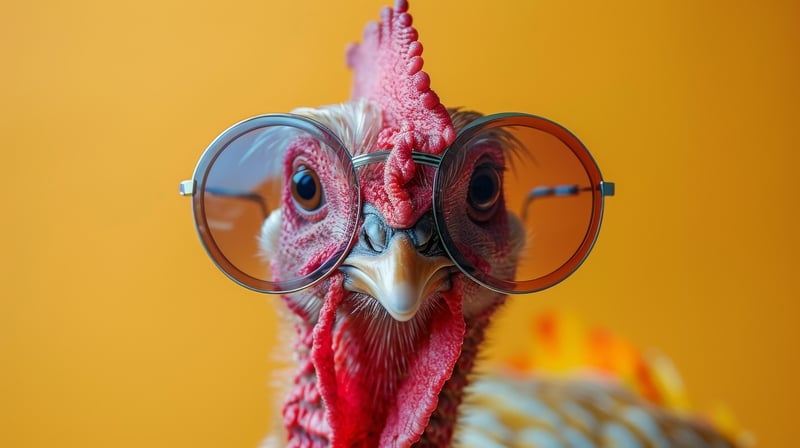Thanksgiving is filled with customs we cherish, such as family feasts, turkey dinners, and the ideal ratio of gluttony to thankfulness. However, much of what we know about Thanksgiving is more myth than fact, much like your uncle’s tall fishing tales.
As if they were a bowl of mashed potatoes, let’s dispel some of the most prevalent Thanksgiving myths.
Myth 1: The Pilgrims Ate Turkey at the First Thanksgiving
The classic roasted turkey most likely comes to mind when you think of Thanksgiving. The problem is that there is no concrete proof that turkey was served during the first Thanksgiving in 1621. Historical accounts of the Pilgrims’ feast include references to shellfish like as fish, clams, and lobsters, as well as venison and wildfowl, most likely ducks or geese.
It was not until the 19th century that turkey became a Thanksgiving mainstay, partly because of the efforts of magazine editor and writer Sarah Josepha Hale to make turkey the focal point of the holiday feast.
Myth 2: Thanksgiving Has Always Been Celebrated in November
The fourth Thursday of November was not marked in the calendars of the Pilgrims. They lacked calendars in the modern sense, to start. Another is that the first Thanksgiving was probably held to commemorate the harvest season in late September or early October.
It wasn’t until President Abraham Lincoln proclaimed Thanksgiving a national holiday in 1863 that it was given its official November date. Prior to President Franklin D. Roosevelt designating the fourth Thursday as the official date in 1941, it was observed on several days even back then.
Myth 3: The Pilgrims Wore Buckles and Black Hats
Ah, the quintessential Pilgrim appearance: towering hats, glittering buckled shoes, and black attire. As it happens, this is less historical fact and more costume. The Pilgrims’ attire, which featured earthy browns, greens, and other subdued hues, was far more vibrant and functional.
Due to the romanticization of the Pilgrims’ appearance in 19th-century paintings and illustrations, the buckle fixation didn’t start until much later.
Myth 4: The First Thanksgiving Was a Peaceful Gathering
The feast between the Pilgrims and the Wampanoag people in 1621 is frequently depicted as a peaceful celebration of friendship, but the truth is far more nuanced. Although the Wampanoag and the Pilgrims did eat together, their relationship was characterized by conflict, mistrust, and survival struggles.
It’s also crucial to remember that, although being frequently left out of conventional Thanksgiving stories, the Wampanoag people were instrumental in assisting the Pilgrims during their first difficult winter.
Myth 5: Tryptophan in Turkey Makes You Sleepy
This is a popular dish that is served every Thanksgiving without fail. Tryptophan is present in turkey, but it is also present in many other foods, including as eggs, cheese, and chicken. In actuality, overeating and your body exerting extra effort to digest all those carbohydrates, lipids, and sweets are more responsible for the post-dinner food coma.
Don’t blame the chicken, blame the pie and mashed potatoes.
Myth 6: Thanksgiving Was Immediately a Big Deal
For many years following the Pilgrim feast, Thanksgiving was not even a popular festival. Before Sarah Josepha Hale, the same woman who popularized turkey feasts, began advocating for a national Thanksgiving holiday, it was more of a regional New England custom.
When Abraham Lincoln declared it a national holiday during the Civil War, in part to bring the divided nation together, her perseverance paid off.
Myth 7: Cranberry Sauce Has Always Been a Staple
Although the Pilgrims probably ate cranberries, sweetened cranberry sauce was not served at the first Thanksgiving. The tart berries would have been eaten dry or plain, if at all, as sugar was a costly luxury in those days.
It wasn’t until the early 1900s that canned cranberry sauce became popular, and to be honest, what would Thanksgiving be without that strangely gratifying swoosh when it comes out of the can?
Myth 8: Black Friday Is a Recent Invention
Although Black Friday as we know it today, with its doorbusters, lineups, and stampedes, seems like a relatively recent invention, the word actually dates back to the 1960s. Police in Philadelphia first used it to characterize the mayhem caused by the influx of shoppers following Thanksgiving.
It wasn’t until the 1980s that shops adopted the phrase and made it into the mega-event it is today that the idea of stores adopting it as the start of the holiday shopping season really took off.
Thanksgiving is a festival with many customs, but some of them aren’t as old or true as we initially believed. The actual history is an intriguing blend of cultural change, myth-busting, and a great deal of turkey PR.
Note: Every piece of content is rigorously reviewed by our team of experienced writers and editors to ensure its accuracy. Our writers use credible sources and adhere to strict fact-checking protocols to verify all claims and data before publication. If an error is identified, we promptly correct it and strive for transparency in all updates, feel free to reach out to us via email. We appreciate your trust and support!




